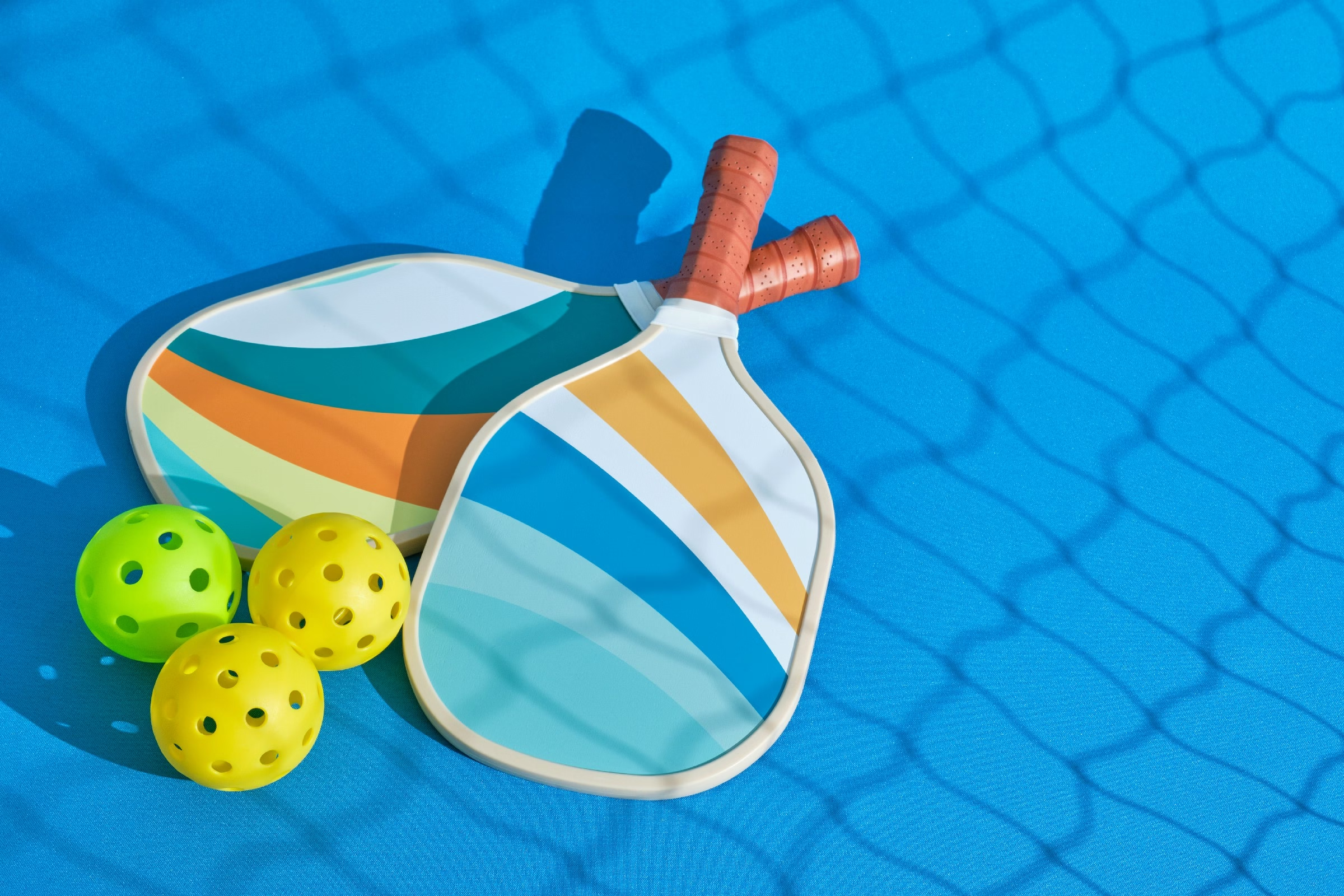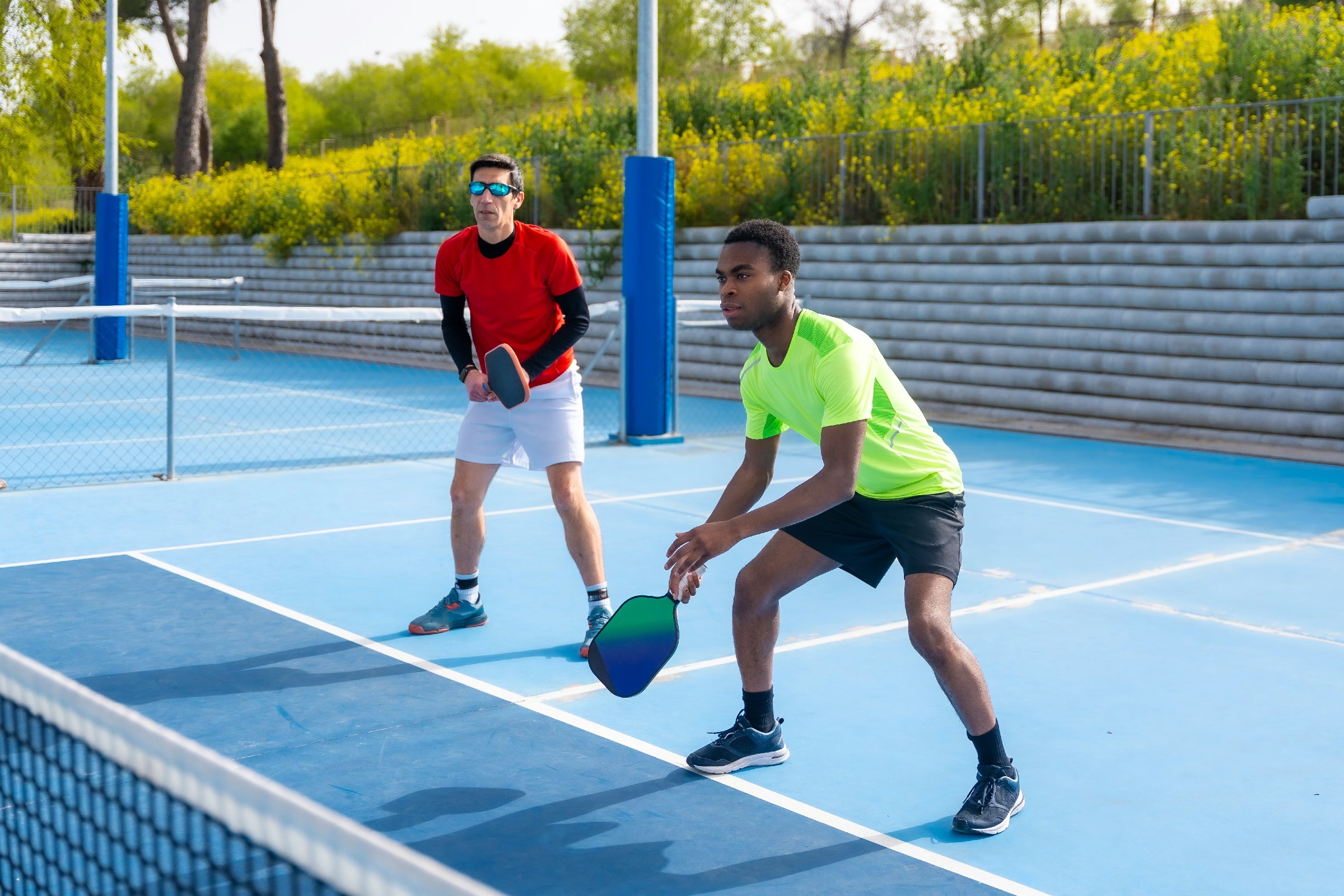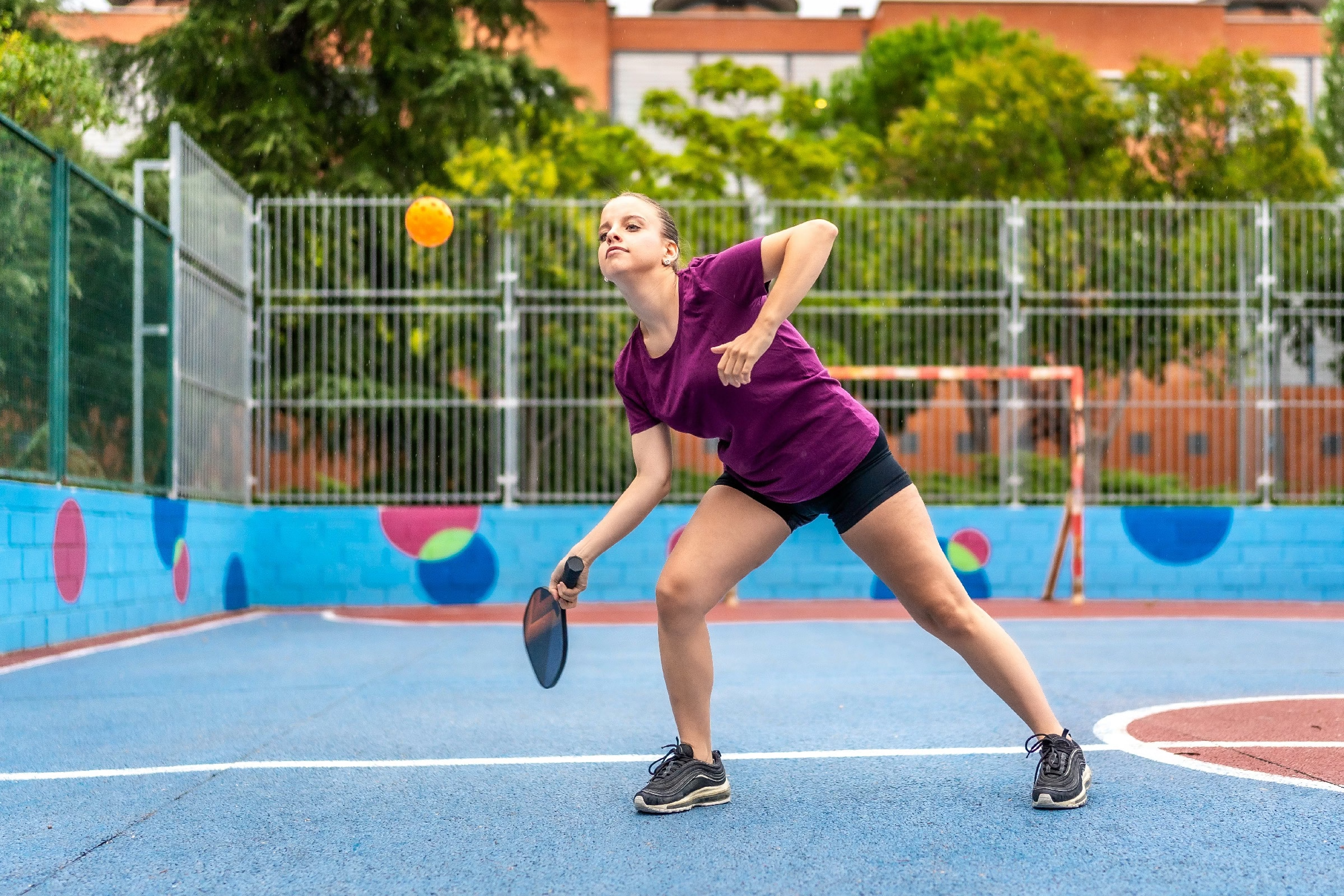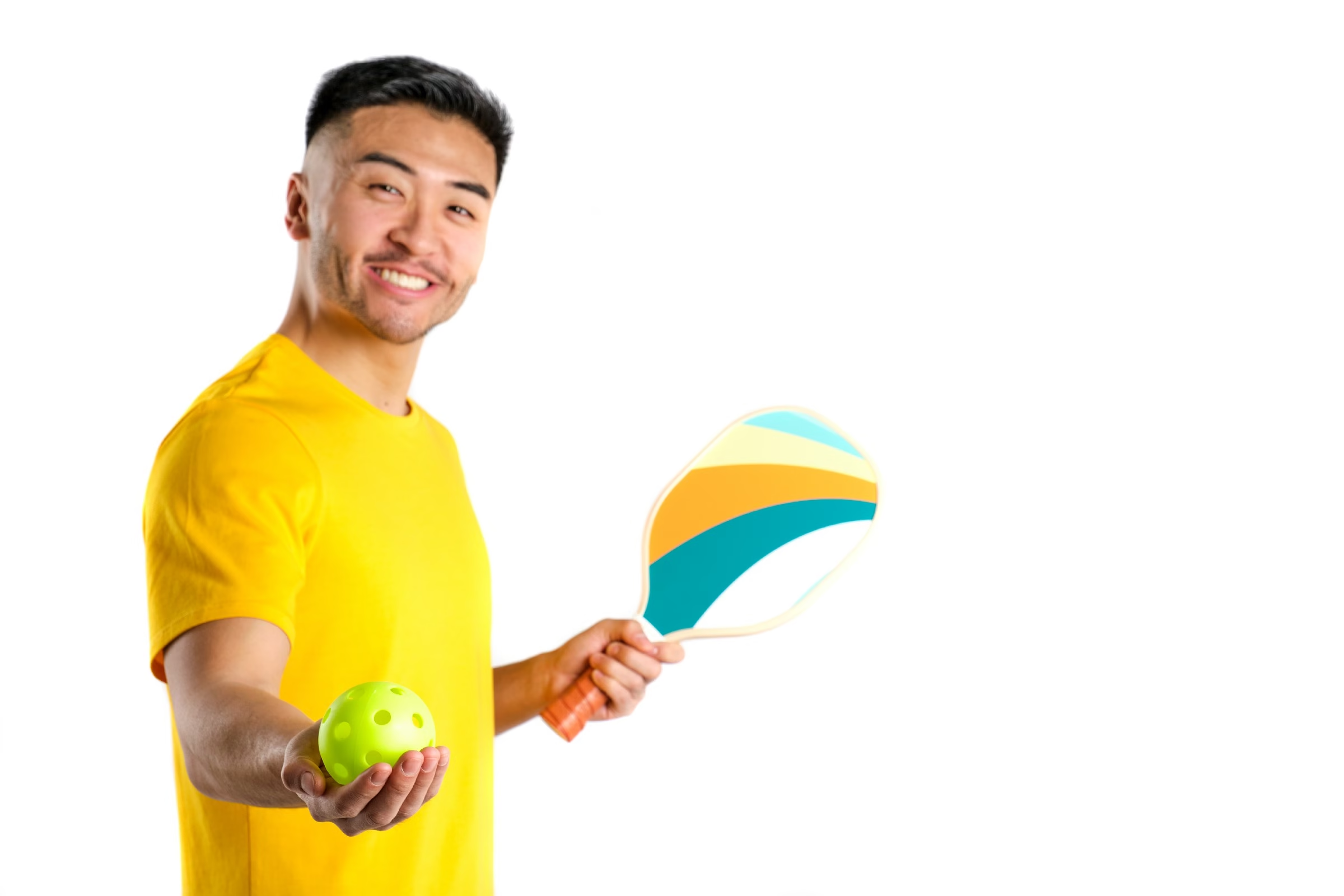Blog
how to play left handed pickleball

Title: Mastering the Court: A Left-Handed guide to Pickleball
Introduction:
In the vibrant world of pickleball, the thrill of the game is matched only by the camaraderie it fosters. Whether you’re a seasoned player or a curious newcomer, the unique blend of tennis, badminton, and table tennis in this rapidly growing sport offers something for everyone. For left-handed players,however,the journey can present a distinct set of challenges and advantages that differ from the conventional approach. As we dive into the nuances of playing pickleball as a lefty, we’ll explore essential techniques, strategies, and tips tailored to enhance your game while celebrating the unique perspective you bring to the court. So grab your paddle and get ready to unlock the secrets of left-handed pickleball—where the left side truly reigns supreme!
Table of Contents
- Understanding the Unique Dynamics of Left-Handed Pickleball
- Essential Gear and Equipment for Left-Handed Players
- Mastering the grip: Techniques for Left-Handed Success
- Strategic Positioning on the Court to Leverage Left-Handed Strengths
- Tactical Advantages: How to Outmaneuver Right-Handed Opponents
- Practicing Drills Tailored for Left-Handed Skills and Strategies
- Q&A
- In Retrospect
Understanding the Unique Dynamics of Left-Handed Pickleball
Left-handed players bring a unique flair to the game of pickleball, ofen elevating the level of play in ways that right-handed players might not anticipate. One of the most notable dynamics is the spin and angle with which a left-handed player hits the ball. When lefties strike, the natural tendency of thier shots can confuse right-handed opponents, who are typically not accustomed to the trajectory and spin generated from a left-hander’s perspective. This can lead to unexpected bounces and openings on the court, creating opportunities for winning points.
The positioning and strategy for left-handed pickleball players also differ significantly. When teaming up with a right-handed player, the synergy can be advantageous. Here’s how:
- Cross-court Coverage: Lefties can effectively cut off angles that right-handers might leave vulnerable.
- Serving Variability: The serve can move in unexpected patterns, making it harder for the opposing team to predict the return.
- Complementary shots: Combining forehands and backhands allows for smoother rallies and dynamic plays.
Understanding the footwork and positioning as a left-handed player is crucial. Lefties should focus on mastering their backhand and forehand transitions to gain control over the center of the court. Below is a simple table that outlines key focus points for left-handed players:
| Focus Area | Description |
|---|---|
| Footwork | Emphasize lateral swift movements to cover ground quickly. |
| Net Play | Capitalize on strong volleys that catch opponents off guard. |
| Shot Selection | Utilize backhand and spin shots for unpredictable gameplay. |
Essential Gear and Equipment for Left-Handed Players
for left-handed pickleball players, having the right gear is essential to enhance performance and ensure comfort on the court. The first thing to consider is the paddle. Left-handed players often benefit from asymmetrical paddle designs that better accommodate their unique grip and swing. Look for paddles with a wider grip to promote control during fast exchanges and allow for more power in backhand shots. Brands like Selkirk and Paddletek offer models explicitly designed for left-handed athletes.
Footwear is another critical component of your setup. A good pair of court shoes with ample support and a non-marking sole can make a meaningful difference in your agility and stability on the court. Be sure to choose shoes that fit snugly without being overly tight, as this can definitely help with quick direction changes essential in pickleball. Additionally,consider investing in ankle supports or braces if you are prone to twists or sprains; these can provide added stability during play.
| Item | Description |
|---|---|
| Paddle | Asymmetrical design for improved grip and control |
| court Shoes | Cozy and supportive footwear with non-marking soles |
| Ankle Supports | Additional stability for quick movements and direction changes |
lastly, don’t overlook the importance of accessories that can elevate your gameplay. A quality grip enhancer can help improve paddle handling, especially in humid conditions. additionally, consider wearing designated pickleball attire that allows for maximum breathability and ease of movement. Headbands or sweatbands can be beneficial to keep sweat out of your eyes during intense matches, helping you stay focused and at the top of your game.
Mastering the Grip: Techniques for Left-Handed Success
For left-handed players, mastering your grip is crucial to gaining a competitive edge on the pickleball court. The eastern Grip is a popular choice that can help maximize control and power. To achieve this grip, hold the paddle as if you’re shaking hands with it.Place your dominant hand at the bottom of the handle while your index finger extends slightly down the face of the paddle for added stability. This grip allows for effective topspin shots, enabling you to add a spin to your serves and groundstrokes.
Another effective grip is the Western Grip, which may be a bit unconventional for beginner players but offers a unique advantage. With the Western Grip, rotate your paddle so that the base knuckle of your index finger faces the back of the paddle. This grip makes it easier to hit high balls and can lead to powerful slams and overheads.Left-handed players should practice this grip regularly to develop muscle memory and become more comfortable executing shots with more spin and angle.
It is essential for left-handed players to consider their positioning on the court. When playing doubles, communicate with your partner to ensure optimal coverage. Here’s a quick reference table to help understand recommended court positions for left-handers:
| Position | Role | Key Tips |
|---|---|---|
| Net Player | offensive | Be aggressive with volleys and anticipate opponents’ moves. |
| Backcourt Player | Defensive | Control the ball and set up your partner for attacks. |
By focusing on these grip techniques and court strategies, left-handed players can significantly enhance their game. Combining strong foundational grips with effective positioning will lead to a more dynamic and accomplished playing style,making left-handers a force to be reckoned with on the pickleball courts.
Strategic Positioning on the Court to Leverage Left-Handed Strengths
To effectively utilize the unique advantages of being left-handed in pickleball, it’s essential to position yourself strategically on the court. By mastering court positioning, you can capitalize on your natural strengths, confusing right-handed opponents who may not anticipate your shots. Here are some key strategies to consider:
- Defensive Alignment: Place yourself on the left side of the court to take advantage of the angled shots coming from your opponent’s forehand.This positioning allows you to respond with your own forehand, maximizing your reach and control.
- Return of Serve: Stand closer to the middle line during serve returns. this enables you to intercept serves aimed at your weaker side while allowing you to unleash powerful cross-court shots.
- Net Play: Position yourself slightly off-center at the net.This gives you the ability to cover more ground while also setting up for strong volleys,leveraging the element of surprise against your opponent.
Understanding the movement patterns of your opponents is crucial. As a lefty, you can benefit from the following tactical insights:
| Opponent Strategy | Counter Strategy |
|---|---|
| Cross-court shot to your backhand | Position to slice back to their forehand |
| Forced to your strong side | Use drop shots to pull them into the net |
| Overhead smashes | Anticipate and position for a quick counter |
don’t underestimate the value of interaction and synergy when playing doubles. Your left-handed positioning can create advantageous dynamics with your partner. Consider these tips:
- Zone Coverage: Coordinate court coverage so that your lefty angles complement your partner’s right-handed strengths, making it harder for opponents to target either of you.
- Shot Variety: Mix up the types of shots you play, varying between topspin and slice, to effectively keep opponents guessing.
- Strategic Serving: Serve wide to leverage your angle advantage, setting up your partner for a more straightforward return.
Tactical Advantages: How to Outmaneuver Right-Handed Opponents
In the dynamic world of pickleball, left-handed players can leverage unique strategies to gain a tactical advantage over their right-handed opponents. One key aspect to focus on is positioning. Left-handers can naturally place themselves in a way that allows them to cover the court more effectively. By positioning yourself on the opposite side of the court, you can create a surprising angle for your shots, making it tough for your opponent to predict your next move. Consider placing yourself at the net to capitalize on your advantage during dinks and volleys.
Another effective strategy is to manipulate the shot selection. Left-handed players can often catch right-handed opponents off-guard, as they are more accustomed to facing other right-handers. Utilize your unique grip to play shots that curve away from your opponent’s dominant hand, giving you a higher chance of winning points. Some effective shots to include are:
- Topspin serves that curve to the left
- Cross-court shots that force your opponent to reach
- Backhand slices that change direction rapidly
Lastly, take advantage of the psychological edge that comes with being a left-handed player. Studies have shown that left-handers may create uncertainty in right-handed opponents, who may not have faced many lefties throughout their play. Emphasize your unpredictable playing style by mixing up your shots and altering the pace of the game. Here’s a simple reference table illustrating how to keep your opponent guessing:
| Shot Type | Effect on Opponent |
|---|---|
| Down-the-line forehand | Forces them to anticipate and react quickly |
| Wide-angle drives | Pulls them off balance and out of position |
| Fake shots | Creates confusion and hesitance |
Practicing Drills Tailored for Left-Handed Skills and Strategies
To enhance your left-handed play, it’s essential to engage in drills that specifically cater to the unique advantages and challenges faced by left-handers. These tailored practices not only build muscle memory but also bolster confidence on the court. Consider implementing drills that focus on your dominant left side, such as:
- Cross-court Volleys: Work on your precision by volleying balls that come from your right side across the court.
- Backhand Returns: Set up a partner or use a wall to practice backhand returns, ensuring you master this crucial technique.
- Left-Handed Slice Serves: Experiment with different spin variations to discover what keeps your opponents guessing.
Incorporating game-like scenarios into your drills can also simulate the dynamics of an actual match, giving you the edge you need. Try setting up a mini-tournament with friends, focusing on left-to-left strategies. Create a game plan by pulling off strategic formations, such as:
| Formation | purpose |
|---|---|
| Left-Handed Overlapping | Utilizes your natural angles to confuse right-handed opponents. |
| Diagonal Shifts | Implements quick lateral movements, using your left-side advantage for faster plays. |
| Double Backhand Wall | Creates a solid defense through left-handed coordination with a partner. |
don’t overlook the mental aspect of training! Visualize your plays and practice mindfulness on the court. Record yourself to identify areas that require improvement, focusing notably on your reaction time and decision-making. Interleave physical drills with mental visualization exercises by picturing successful maneuvers, which helps solidify patterns and enhance your performance when it matters most. This comprehensive approach, centered around your left-handedness, will surely elevate your game in pickleball.
Q&A
Q&A: How to Play Left-Handed Pickleball
Q1: What is pickleball, and how does it differ from other racket sports?
A1: Pickleball is a fast-paced paddle sport that combines elements of tennis, badminton, and table tennis. Played on a smaller court than tennis, it uses a lighter ball and solid paddles. The goal is to hit the ball over the net and into the opponent’s court, ultimately scoring points when they fail to return it.
Q2: What unique challenges do left-handed players face in pickleball?
A2: Left-handed players may encounter unique challenges such as adapting to the predominantly right-handed nature of the game. Many strategies and play styles are designed with right-handed players in mind, which can occasionally put left-handed players at a disadvantage.However, these players can also capitalize on their differences to create unexpected angles and shots that may confuse their opponents.
Q3: Can left-handed players use specific techniques to their advantage?
A3: Absolutely! Left-handed players can utilize their natural orientation to create a strategic edge. for instance, when serving or returning, left-handers can position themselves to hit cross-court shots that right-handed players might struggle to return.Using spin effectively can also play a significant role, as lefties can generate different trajectories that may catch opponents off guard.
Q4: What should left-handed beginners focus on when learning to play pickleball?
A4: As a left-handed beginner, focus on mastering the fundamentals first: grip, stance, and basic shots (forehand, backhand, volleys, and serves). Additionally, practice drills specifically designed for your dominant hand, and consider partnering with a right-handed player for practice. This duality allows for the exploration of varied shot angles and strategies that can enhance gameplay proficiency.
Q5: Are there any special equipment considerations for left-handed players?
A5: While most pickleball equipment is designed for universal use,left-handed players may find it beneficial to choose paddles with a grip that feels comfortable for their left hand. Some players prefer to customize their grip or look for paddles with a weight distribution that feels more natural for left-handed swings. There isn’t a need for specialty left-handed paddles, but comfort and grip style can make a significant difference.
Q6: What are some common strategies that left-handed players can adopt?
A6: left-handed players can adopt several strategies to maximize their strengths, such as:
- Cross-court Serving: Utilizing the left-hand angle to serve wide and exploit space.
- Deceptive Shots: incorporating spins and placement that may seem counterintuitive to right-handed opponents.
- Positioning: Standing in strategic locations to intercept balls effectively, making use of their advantageous angles.
Q7: How can left-handed players improve their game?
A7: Improvement comes from practice and play! Engage in regular drills focused on shot accuracy, reflexes, and footwork.Playing with a variety of partners can provide new perspectives and challenge your skills.Additionally, watching experienced left-handed players can offer insights into unique tactics that work well in matches.
Q8: Any final tips for left-handed players looking to excel in pickleball?
A8: Embrace your left-handedness! Use it as a unique asset rather than a limitation. Stay adaptable, learn from every match, and don’t hesitate to unleash your creativity on the court. Remember, every player brings their own flair to pickleball; your left-handed playstyle is just one of the many ways to shine in this vibrant sport!
In Retrospect
As we wrap up our exploration of playing left-handed pickleball, it’s clear that the sport welcomes players of all styles and preferences.Whether you’re a seasoned athlete or a curious newcomer,embracing a left-handed approach can offer unique advantages and elevate your game.Remember, practice is key, so hit the courts with confidence and experiment with different techniques to find what works best for you.
Ultimately, the world of pickleball is about connection, fun, and growth—regardless of which hand you play with. So gather your friends, enjoy the camaraderie of the game, and who knows? You might just discover a new passion that keeps you coming back for more. Happy playing!












